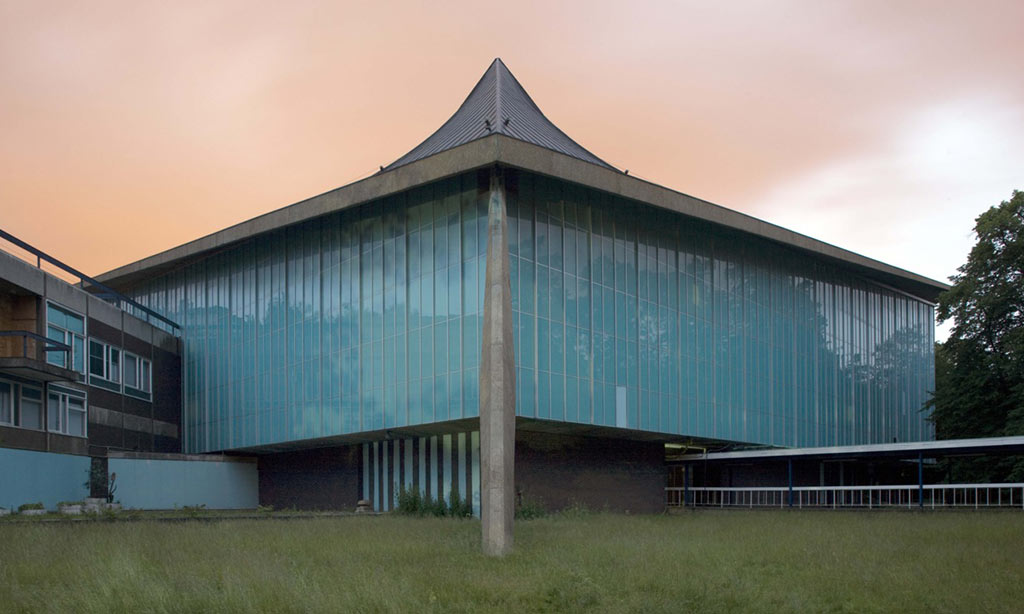Estimated reading time: 3 min
The Commonwealth Institute, now the Design Museum, remains one of the most striking pieces of architecture RMJM has produced and is widely heralded as an iconic British gem of the 20th Century. Designed by Sir Robert Matthew just a few years after the inception of RMJM, the building was tasked with showcasing to the public “how the rest of the Commonwealth lives.” Opened by Queen Elizabeth II in 1963 and located in a pre-eminent West London site, the building was funded by contributions from Commonwealth nations and became a distinguished space for educating the public on art, dance, music, architecture and design produced within the recently formed Commonwealth. However, the building itself, while catering to the needs of the public, became an outright icon itself which explains why it has been able to live on as the home of the Design Museum while The Commonwealth Education Trust is now housed at New Zealand House, another lauded RMJM building. The Commonwealth Institute was clearly unique in architectural terms but what led to it becoming so cherished by the wider public, and what does that say about the cultural buildings needed in modern day cities?
Build at a time of post-war optimism and symbolic of a transition from Empire to Commonwealth, Sir Robert Matthew’s design aspired to achieve the concept of a ‘pavilion in the park’ as evidenced by the building’s tent-like roof stretching across the whole building. The interior of the main building was founded upon a theme of inclusiveness and structured as a three-level exhibition hall linking its multiple spaces with sui generis walkways. Of course, for anyone who has witnessed the building in person, it is the incredible parabolic copper roof that stands out. Made with 25 tonnes of copper donated by the Norther Rhodesia Chamber of Mines, it represents true innovation in both form and design. Moreover, the roof’s aesthetic and functionality are now generally considered as a hallmark of 1960s British architecture.
If ever an example of architecture being influenced by its surroundings is needed then look no further than The Commonwealth Institute. The building was uniquely positioned between one of the most iconic streets in London (Kensington High Street) and one of the city’s most prominent parks (Holland Park). This contrast undoubtedly adds to impact of the building which is viewed on approach from urban landscape and surrounded by greenery from behind illuminating its sky-blue façade even more. This informal composition of elements produces something completely of its own, even in London, considering it’s urban setting. Of course, the post-war structural flair is fundamental to the building’s success. The Commonwealth Institute cleverly broke from traditional historical narratives to provide a functionality that, in the modern day, is now assumed. Whist the flexibility of the main hall allowed for an array of events and exhibitions, it’s lasting achievement is how it allowed for the free flow of people within it and promoted an atmosphere open to the exchange of ideas and information – something key to the Commonwealth itself.
Daring engineering and innovative design, as we frequently see, are not always what a city needs. So why did The Commonwealth Institute succeed and why were the owners of the new Design Museum so keen to keep the majority of the building in tact? There are lots of elements to consider here. The building (a combination of public and private) sits in one of the most exclusive areas in London and the inclusiveness of the space certainly makes it rare for this area of the city. And while the building will always remain synonymous with The Commonwealth Institute, it is easy to see why the Design Museum thought it would make the perfect home for its exhibitions. It’s colour, shape, relationship with its environment and history all have had a strong influence on how the building is perceived too. In short, there had simply been nothing like it in London before. History is so intertwined with great architecture that even in a city like London, which is modernising at an incredible speed, the public know the difference between the real thing and the latest thing.


